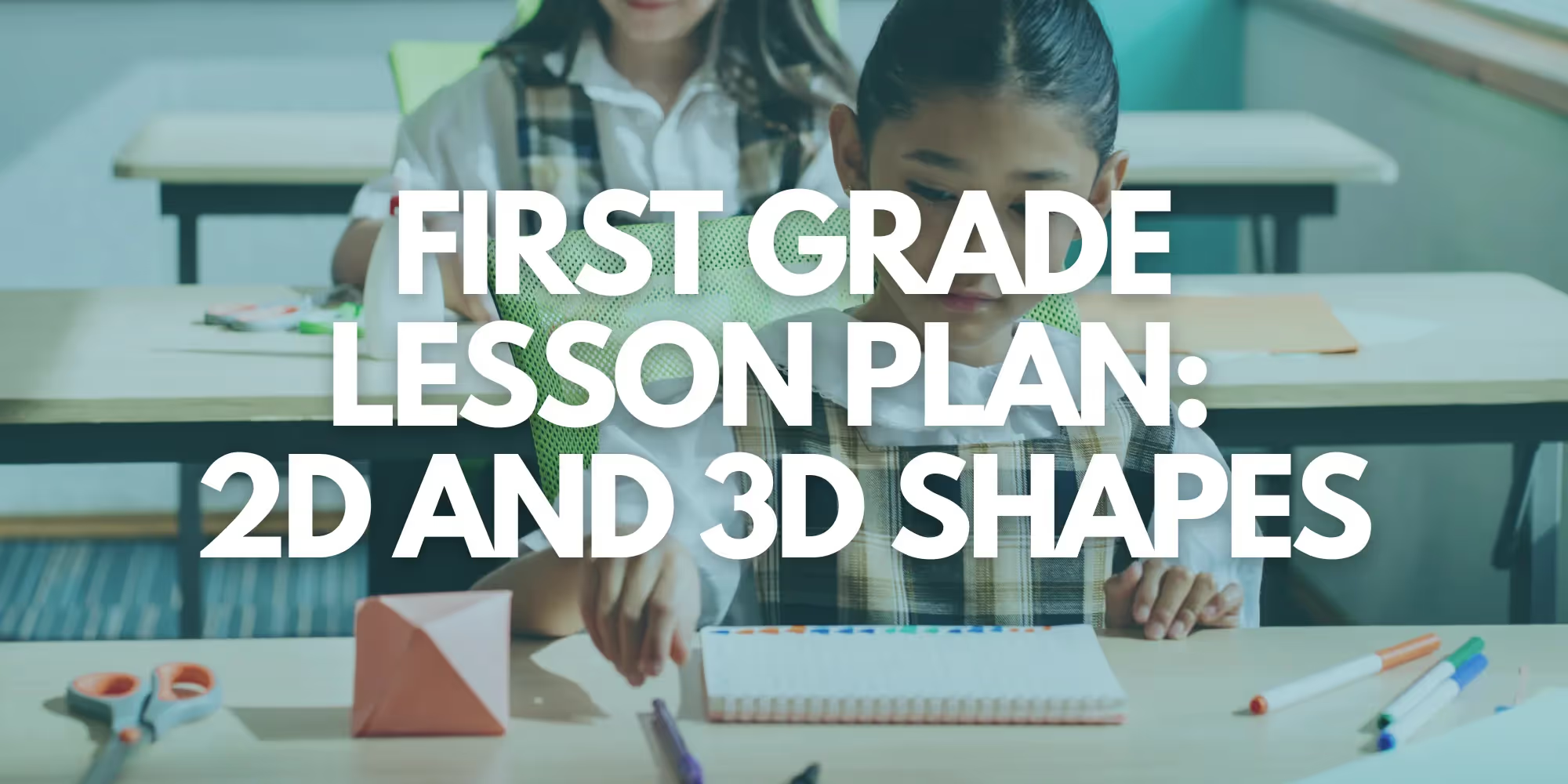Why 2D & 3D Identification is Foundational
Recognizing and distinguishing between two-dimensional (flat) shapes and three-dimensional (solid) objects enhances their ability to understand geometry and spatial relationships, which are crucial for problem-solving, navigation, and reasoning. These skills lay the groundwork for math concepts such as shapes, measurement, and volume. Additionally, 2D and 3D identification improves visual perception, hand-eye coordination, and the ability to interpret visual information, all of which are vital in early childhood development and later academic success.
Creating a Lesson Plan in 2 Minutes with Brisk: Step-by-Step Guide
Step 1: Install the Brisk Extension and pin Brisk to your browser toolbar.
Step 2: Open up a blank Google Doc and click the Brisk Chrome extension (“B” icon) in the bottom right corner of your screen.
Step 3: Click the ‘Create’ button and then click ‘Lesson Plan’.
Step 4: In the text box, type: “2D and 3D Shapes hands-on”
Step 5: Select the appropriate Grade level and Standard (optional).
Step 6: Click ‘Add-on’ to generate the worksheet.
Lesson Plan: 2D and 3D Shapes
Grade Level: 1st Grade
Lesson Length: 30 minutes
Lesson Overview
This lesson will introduce students to the basic concepts of 2D and 3D shapes. Students will learn to identify and classify common 2D and 3D shapes, and explore the differences between them.
Common Core Standards
- CCSS.MATH.CONTENT.1.G.A.1 Distinguish between defining attributes (e.g., triangles are closed and three-sided) versus non-defining attributes (e.g., color, orientation, overall size)
- CCSS.MATH.CONTENT.1.G.A.2 Compose two-dimensional shapes (rectangles, squares, trapezoids, triangles, half-circles, and quarter-circles) or three-dimensional shapes (cubes, right rectangular prisms, right circular cones, and right circular cylinders) to create a composite shape, and compose new shapes from the composite shape.
Lesson Objectives
Students will be able to:
- Identify and name common 2D shapes (circle, square, rectangle, triangle)
- Identify and name common 3D shapes (cube, sphere, cylinder, cone)
- Recognize the differences between 2D and 3D shapes
Materials Needed
- 2D shape cut-outs or poster
- 3D shape models or images
- Interactive whiteboard or projector (optional)
Introduction (5 minutes)
- Begin the lesson by showing students a variety of 2D and 3D shapes.
- Ask them to describe what they notice about the shapes. What is the same? What is different?
- Explain that today they will be learning about the differences between 2D and 3D shapes.
2D Shapes (10 minutes)
- Display the common 2D shapes (circle, square, rectangle, triangle) and have students identify each one.
- Discuss the defining attributes of each 2D shape (number of sides, straight or curved, closed or open, etc.).
- Have students practice identifying 2D shapes around the classroom.
- Optional activity: Give students shape cut-outs and have them create their own 2D shape pictures.
3D Shapes (10 minutes)
- Show students the common 3D shapes (cube, sphere, cylinder, cone).
- Explain that 3D shapes are different from 2D shapes because they have depth and can be held in your hand.
- Discuss the defining attributes of each 3D shape (number of faces, edges, vertices, etc.).
- Have students practice identifying 3D shapes around the classroom.
- Optional activity: Provide 3D shape models and have students explore the shapes by touching and examining them.
Wrap-up (5 minutes)
- Review the key differences between 2D and 3D shapes.
- Ask students to share examples of 2D and 3D shapes they encountered during the lesson.
- Encourage students to continue looking for 2D and 3D shapes in their everyday lives.
Classwork: 2D and 3D Shapes
2D and 3D Shapes Worksheet
Name: ______________________
1. Draw a line to match each 2D shape to its name.
[ ] Circle
[ ] Square
[ ] Rectangle
[ ] Triangle
2. Circle the 3D shapes you see below.
Cube Sphere Circle Cylinder Cone
3. Color the 2D shapes blue and the 3D shapes red.
2D and 3D Shapes Activity
Materials Needed:
- 2D shape cut-outs (circle, square, rectangle, triangle)
- 3D shape models (cube, sphere, cylinder, cone)
Instructions:
1. Work with a partner to sort the 2D and 3D shape pieces into two groups.
2. Glue or tape the 2D shapes onto one piece of paper and the 3D shapes onto another.
3. Write the name of each shape under the picture.
4. Share your 2D and 3D shape posters with the class.
2D and 3D Shapes Exit Ticket
1. What is the difference between a 2D shape and a 3D shape?
2. Name one 2D shape and one 3D shape you learned about today.
3. Draw a picture of your favorite 2D or 3D shape.
Use Brisk to Customize This Lesson Plan in Just a Few Clicks
Like this lesson plan, but want to modify to your students? Try Brisking it & save time!
Here’s how to modify this lesson plan in seconds:
Step 1: Install the Brisk Extension and pin Brisk to your browser toolbar.
Step 2: File > Make a copy of the lesson plan.
Step 3: Click the Brisk Chrome extension (“B” icon) in the bottom right corner of your screen.
Step 4: Click the ‘Something Else’ button.
Step 5: Type in the text box and ask Brisk to adjust the lesson plan for your students. The more specific you are, the more tailored your lesson plan will be!
Consider modifying for students with IEPs, movement, shorter lessons, extension activities, and so much more!
.webp)
.webp)






